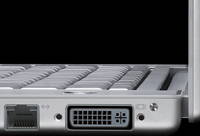Deconstructing rumors of Mac ultralight, tablet: Part 1

Stories are surfacing about new form factors due out of Cupertino: a small multitouch tablet and an ultralight notebook. While anything is possible where Steve Jobs is involved, there are operational and market reasons why Apple would pass on these product categories.
Firstly, my Apple Core partner, Jason O'Grady pointed to a report that an ultralight is under development.
They will be available in black and silver aluminum and "considerably slimmer than current MacBook and even a bit more than MacBook Pro," according to the post. Where it gets interesting is the site’s allusion to a mythical piece of Apple hardware never before seen ...

Meanwhile, AppleInsider recently said that the Newton was being resurrected. Or more to the point, a device that's larger than the iPhone that supports multi-touch technology and pen input.
Externally, the multi-touch PDA has been described by sources as an ultra-thin "slate" akin to the iPhone, about 1.5 times the size and sporting an approximate 720x480 high-resolution display that comprises almost the entire surface of the unit. The device is further believed to leverage multi-touch concepts which have yet to gain widespread adoption in Apple's existing multi-touch products – the iPhone and iPod touch – like drag-and-drop and copy-and-paste.
But are these wisps of smoke really believable as an evidence of fire?
Of course, there's always a credibility problem with all rumors of Apple hardware and they must be taken with a liberal dose of salt. Over the years, many hardware lines that were expected and predicted never come to pass. And that includes past reports of ultralights and mini-tablets.
Worse, I suggest that both the ultralight and tablet product categories are especially susceptible to wish-fulfillment fantasies. Many Mac users say they want them.; we even dream about them. So, they must be the logical next step for Apple, right?
Like Jason, I have wished over the years for a Mac ultralight. This is because I've had to carry a notebook all day long, from morning until late at night. Somehow even a lightweight machine grows heavier and heavier as the day progresses.
Yet, each time over the past decade or so that I've quizzed Apple's notebook line managers about plans for an ultralight — perhaps "pleaded" might be a more accurate description of my questioning — the same response has been given: there's not enough demand.
According to the execs, most Mac users really don't want the performance and feature tradeoffs required for a true ultralight. Or while Apple may recognize that there's some demand, there's not enough demand to make such a project worthwhile.
Same difference with the mini-tablet. While we want hyper-mobility, Mac users also want hyper-performance and at a less-than-hyper price. When Apple runs the numbers, it may not add up to a real product.
Other companies can seek to wait for the market to catch up with this solution, but not Apple. When the market and technology are in sync, perhaps then the company will dive in — as we saw with the iPod introduction.
So, the rumors of these new form factors face a long history of Apple execs saying "no." Still, similar things were written about Intel Macs, so the fan base can still have hope.
However, with recent history to guide us, we might wonder whether Apple can handle the development load for several new hardware platforms at this moment.
Remember that Mac OS X 10.5 Leopard was supposed to have shipped in the spring. It was delayed until October because of the extra Q&A testing and development resources that were needed by the iPhone. Engineers were pulled off of Leopard and put to work on the phone.
And none too soon, according to some developers that I spoke with the other week.
As late as a week ago, several software developers I spoke with said that they were still having trouble with Leopard builds. One gave kudos to Apple engineers, who did "killer" work on the iPhone, but he was glad that they were finally back fixing Leopard bug reports.
"It's not like things are broken, [instead] it's a reliability thing. We're still scrambling to work around bugs," one developer who requested anonymity said.
A new Leopard build (9A559) was sent to developers this week, marking a slight speedup in the release cycle in advance for a Golden Master candidate. We will see how many bugs have been shaken out.
Some will say that an ultralight and a mini-tablet would be evolutionary products and not require much additional effort. I can buy that argument for the ultralight but not for the mini-tablet, which would tackle more-serious input and have a different relationship to applications than the iPhone.
In the second part of this story, I will look at a several historical and strategic trends at Apple that might predispose the company to pass on ultralight and tablet form factors.
Then again, I could be proved wrong. Please let it be so, Apple!